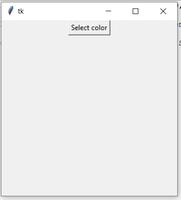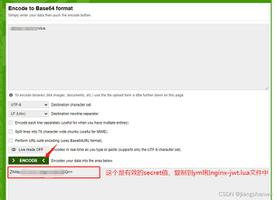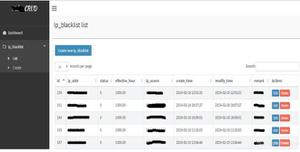Python startswith()和endswith() 方法原理解析
startswith()方法
Python startswith() 方法用于检查字符串是否是以指定子字符串开头
如果是则返回 True,否则返回 False。如果参数 beg 和 end 指定值,则在指定范围内检查。
str.startswith(str, beg=0,end=len(string));
参数
- str --检测的字符串。
- strbeg --可选参数用于设置字符串检测的起始位置。
- strend --可选参数用于设置字符串检测的结束位置。
返回值
如果检测到字符串则返回True,否则返回False。
常用环境:用于IF判断
#!/usr/local/bin/python
# coding=utf-8
listsql = 'select * from ifrs.indiv_info'
def isSelect(sql):
chsql = sql.upper().strip()
if not chsql.startswith("SELECT "):
return False
return True
print isSelect(listsql)
[root@bigdata-poc-shtz-3 zw]# python h.py
True
endswith()方法
作用:判断字符串是否以指定字符或子字符串结尾,常用于判断文件类型
一、函数说明
语法:string.endswith(str, beg=[0,end=len(string)])
string[beg:end].endswith(str)
参数说明:
- string: --被检测的字符串
- str: --指定的字符或者子字符串(可以使用元组,会逐一匹配)
- beg: --设置字符串检测的起始位置(可选,从左数起)
- end: --设置字符串检测的结束位置(可选,从左数起)
如果存在参数 beg 和 end,则在指定范围内检查,否则在整个字符串中检查
返回值:
如果检测到字符串,则返回True,否则返回False。
解析:如果字符串string是以str结束,则返回True,否则返回False
注:会认为空字符为真
python
>>> endsql = 'select * from ifrs.indiv_info'
>>> endsql.endswith('info')
True
>>> endsql.endswith('info',3)
True
>>>
>>> endsql.endswith('info',3,10)
False
>>> endsql.endswith('info',25,29)
True
>>> endsql.endswith('')
True
常用环境:用于判断文件类型(比如图片,可执行文件)
>>> f = 'a.txt'
>>> if f.endswith(('.txt')):
... print '%s is a txt' %f
... else:
... print '%s is not a txt' %f
...
a.txt is a txt
以上是 Python startswith()和endswith() 方法原理解析 的全部内容, 来源链接: utcz.com/z/332264.html






